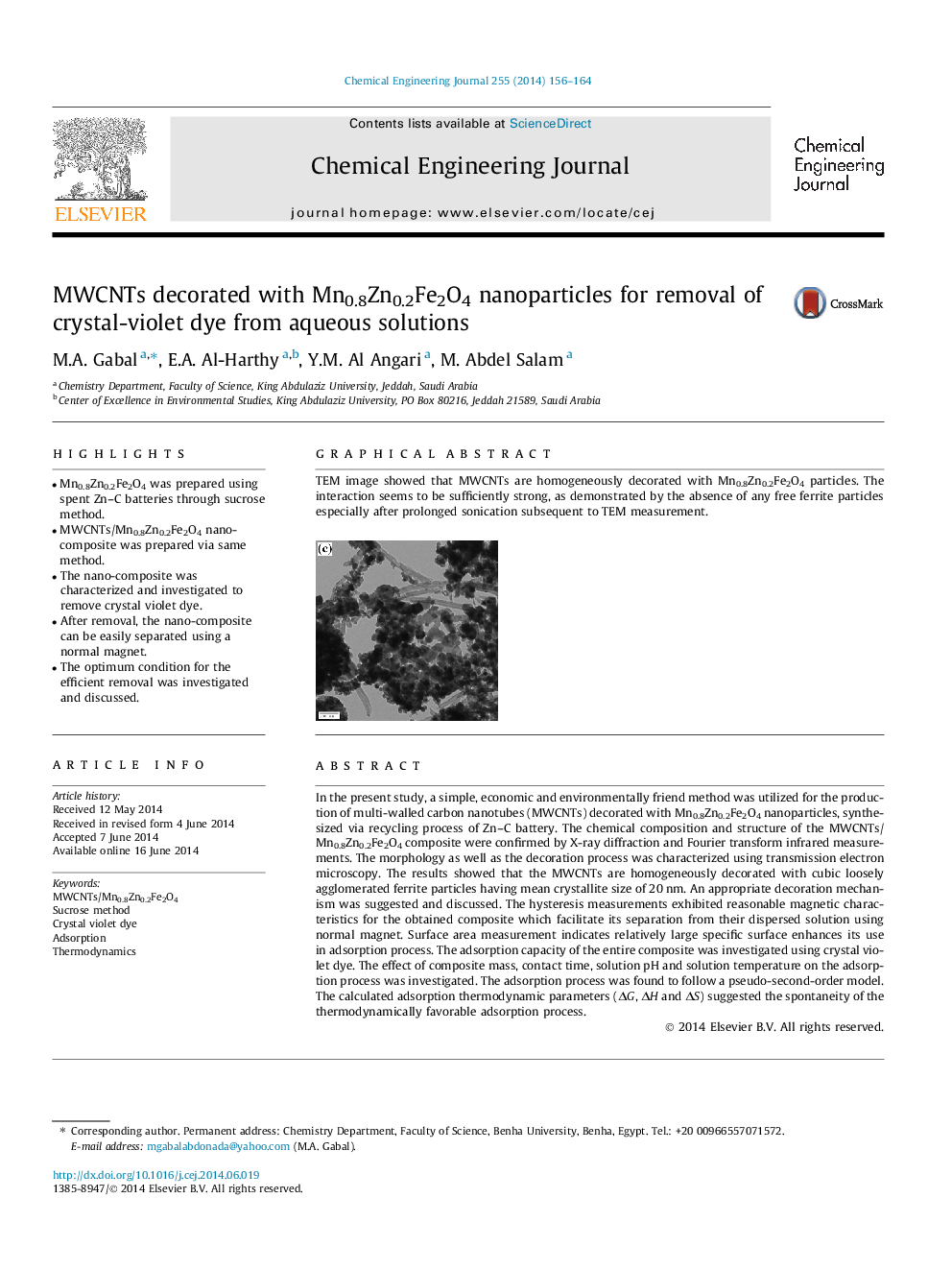| کد مقاله | کد نشریه | سال انتشار | مقاله انگلیسی | نسخه تمام متن |
|---|---|---|---|---|
| 147051 | 456385 | 2014 | 9 صفحه PDF | دانلود رایگان |

• Mn0.8Zn0.2Fe2O4 was prepared using spent Zn–C batteries through sucrose method.
• MWCNTs/Mn0.8Zn0.2Fe2O4 nano-composite was prepared via same method.
• The nano-composite was characterized and investigated to remove crystal violet dye.
• After removal, the nano-composite can be easily separated using a normal magnet.
• The optimum condition for the efficient removal was investigated and discussed.
In the present study, a simple, economic and environmentally friend method was utilized for the production of multi-walled carbon nanotubes (MWCNTs) decorated with Mn0.8Zn0.2Fe2O4 nanoparticles, synthesized via recycling process of Zn–C battery. The chemical composition and structure of the MWCNTs/Mn0.8Zn0.2Fe2O4 composite were confirmed by X-ray diffraction and Fourier transform infrared measurements. The morphology as well as the decoration process was characterized using transmission electron microscopy. The results showed that the MWCNTs are homogeneously decorated with cubic loosely agglomerated ferrite particles having mean crystallite size of 20 nm. An appropriate decoration mechanism was suggested and discussed. The hysteresis measurements exhibited reasonable magnetic characteristics for the obtained composite which facilitate its separation from their dispersed solution using normal magnet. Surface area measurement indicates relatively large specific surface enhances its use in adsorption process. The adsorption capacity of the entire composite was investigated using crystal violet dye. The effect of composite mass, contact time, solution pH and solution temperature on the adsorption process was investigated. The adsorption process was found to follow a pseudo-second-order model. The calculated adsorption thermodynamic parameters (ΔG, ΔH and ΔS) suggested the spontaneity of the thermodynamically favorable adsorption process.
TEM image showed that MWCNTs are homogeneously decorated with Mn0.8Zn0.2Fe2O4 particles. The interaction seems to be sufficiently strong, as demonstrated by the absence of any free ferrite particles especially after prolonged sonication subsequent to TEM measurement.Figure optionsDownload as PowerPoint slide
Journal: Chemical Engineering Journal - Volume 255, 1 November 2014, Pages 156–164